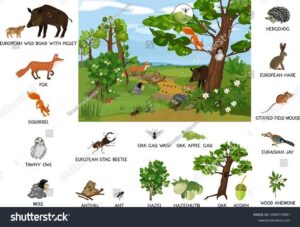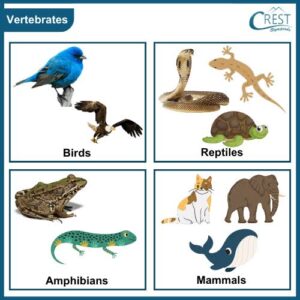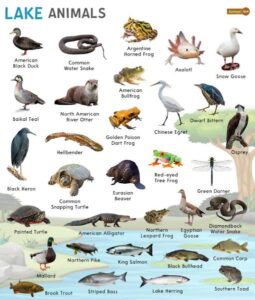Back to: ZOOLOGY 300 Level
Welcome To Class!
Hello, my sharp and curious learner! I’m so glad you’re here again. Today, we’re going to look at how mammals and birds manage to live comfortably in all sorts of places—from the burning Sahara to the icy Arctic. You’ll find it amazing how their bodies, behaviours, and features help them survive in these very different environments. Let’s get started!
Mammals And Birds In Different Habitats
What Is a Habitat?
A habitat is the natural home or environment where an animal lives, finds food, mates, and raises its young. Different animals are found in different habitats based on what their bodies can handle and what resources they need to survive.

Some common habitats include:
- Forests
- Grasslands
- Deserts
- Water bodies (rivers, oceans)
- Mountains
- Polar regions
Mammals in Different Habitats
Mammals are highly adaptable and found in almost every habitat on Earth. Their warm-blooded nature, body coverings (fur or hair), and parental care give them an advantage.
- Deserts: Animals like camels and fennec foxes live in deserts. Camels have long eyelashes, nostrils that close, and humps to store fat for energy. Their bodies conserve water and handle heat well.
- Forests: Monkeys, leopards, and elephants live in tropical forests. They have strong limbs for climbing, good vision, and can feed on a wide variety of fruits and plants.
- Aquatic habitats: Whales and dolphins live fully in water. Their bodies are streamlined, with flippers and tails to help them swim. They breathe air but can hold their breath for long periods.
- Polar regions: Polar bears have thick fur and a layer of fat (blubber) to keep them warm. They also have large paws to walk on snow and ice without sinking.

Birds in Different Habitats
Birds are also very diverse in their habitats. Their feathers, wings, beaks, and behaviours are all shaped by where they live.
- Wetlands: Birds like herons and ducks have webbed feet for swimming and long legs for wading through water.
- Forests: Parrots and hornbills live in forests. They have strong beaks for cracking nuts and claws for gripping branches.
- Deserts: Birds like ostriches live in dry regions. Ostriches can’t fly but have strong legs for running fast from danger.
- Mountains and cold areas: Penguins and snow owls are found in cold habitats. Penguins have thick feathers and swim well in freezing water. Snow owls have white feathers for camouflage in snow.

Why These Adaptations Matter
Living in different habitats means facing different challenges. These animals survive because of their:
- Body coverings (fur, feathers)
- Special features (webbed feet, large ears, long beaks)
- Behaviours (migration, burrowing, flying)
Every feature plays a role in helping the animal survive where it lives.
Summary
- A habitat is an animal’s natural environment.
- Mammals like camels, whales, and polar bears have adapted to live in deserts, water, and cold regions.
- Birds like ducks, ostriches, and penguins have special features that help them survive in wetlands, deserts, and icy lands.
- These adaptations are crucial for survival and reproduction in different environments.
Evaluation
- What is a habitat?
- How is a camel adapted to live in the desert?
- Name one aquatic mammal and one aquatic bird.
- Why do polar bears and penguins have thick body coverings?
- How are forest birds like parrots suited to their environment?
Fantastic job, my dear learner! Isn’t it amazing how animals can live almost anywhere because of how smartly they’re built? You’re learning so much and growing wiser every day. Keep that curiosity alive—Afrilearn is always here to help you shine. See you in the next exciting lesson!
